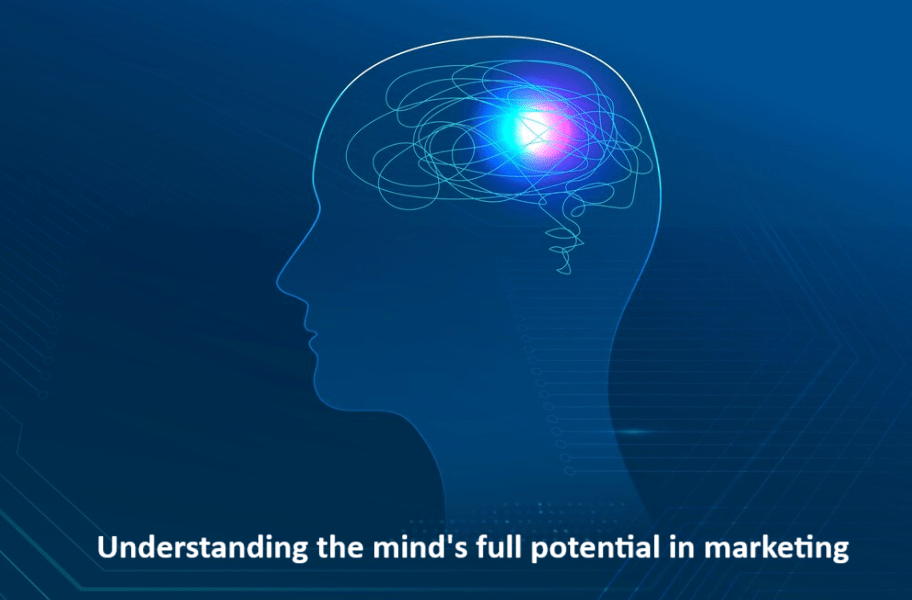Have you ever wondered why you find yourself irresistibly drawn to certain products, even when you hadn’t planned on making a purchase? Or why a simple jingle or scent can trigger an emotional response that sways your buying decision? Welcome to the fascinating world of neuromarketing, a realm where psychology, neuroscience, and marketing converge to tap into the subconscious drivers of consumer behavior.
As a Chief Marketing Analyst and Behavioral Strategist, I’ve spent countless hours decoding the invisible strings that influence our decisions. Neuromarketing, a field that once seemed like science fiction, is now a powerful tool that allows us to understand the human mind’s complex mechanisms and apply this knowledge to create compelling marketing strategies. But as with any tool, its power must be wielded with precision and ethical consideration.
In this article, I will guide you through the labyrinth of neuromarketing techniques, examining the problems they solve, the scale and effects of these problems, and the innovative solutions that can reshape the marketing landscape. Finally, we will paint a vivid picture of the transformative gains that can be realized by embracing these solutions.
The Mind’s Hidden Playground: The Limits of Traditional Marketing
Traditional marketing has long relied on surface-level data—demographics, purchase history, surveys—to understand consumer behavior. While these methods provide valuable insights, they often fall short of uncovering the underlying motivations that drive decisions. This gap creates a disconnect between brands and consumers, leading to marketing campaigns that miss the mark, fail to engage, or worse, alienate the very audience they aim to attract.
Consider this: Why do two products with nearly identical features and pricing perform so differently in the market? Why does a campaign that tested well in focus groups flop when launched? The answer lies in the fact that traditional marketing methods don’t account for the subconscious influences—emotions, biases, sensory triggers—that play a pivotal role in decision-making. These unseen forces operate beneath the surface, shaping preferences and driving actions without the consumer’s conscious awareness.
Missed Opportunities and Ineffective Campaigns
The implications of this gap are profound. According to a study by Nielsen, over 80% of new products fail within their first year, often because the marketing strategies behind them don’t resonate with consumers on a deeper level. These failures represent not just lost revenue, but also squandered opportunities to build lasting customer relationships and brand loyalty.
Moreover, in an era where consumers are bombarded with thousands of marketing messages daily, the ability to cut through the noise and make a meaningful connection has never been more critical. Traditional methods, which often rely on broad generalizations and outdated assumptions, simply can’t keep pace with the complexity of modern consumer behavior. The result? Campaigns that feel generic, irrelevant, and easily ignored.
The Neuromarketing Revolution—Bridging the Gap

Leveraging Neuromarketing Techniques
Neuromarketing offers a revolutionary solution to the challenges outlined above by diving into the brain’s workings to uncover the subconscious processes that guide consumer decisions. This approach is built on the understanding that our brains are wired to respond to certain stimuli in predictable ways—ways that can be measured, analyzed, and harnessed to create more effective marketing strategies.
Eye Tracking and Facial Coding:
These techniques analyze how consumers visually interact with ads, packaging, or websites. Eye tracking reveals what draws attention and what gets overlooked, while facial coding deciphers the emotional reactions triggered by different stimuli. This data enables marketers to design content that captures attention and evokes the desired emotional response, ensuring that the message resonates on a deeper level.
fMRI and EEG:
Functional Magnetic Resonance Imaging (fMRI) and Electroencephalography (EEG) are tools that allow marketers to observe brain activity in real-time. fMRI measures changes in blood flow to different parts of the brain, providing insights into how various stimuli affect emotional and cognitive responses. EEG tracks electrical activity in the brain, revealing patterns associated with attention, engagement, and memory retention. By understanding how different marketing elements affect the brain, marketers can optimize their strategies to trigger positive responses and enhance recall.
Sensory Branding:
This technique taps into the power of the senses to create memorable brand experiences. From the scent of freshly baked bread in a grocery store to the texture of packaging, sensory branding appeals to the brain’s primal instincts, forging connections that are both emotional and enduring. It’s no coincidence that certain brands are instantly recognizable by a color, sound, or smell—these sensory cues become ingrained in our memories, influencing our preferences and buying behavior.
The Role of Technology and Data
The rise of big data and advanced analytics has been instrumental in the growth of neuromarketing. Companies like Nielsen Consumer Neuroscience and Neuro-Insight have been at the forefront of integrating neuroscience with marketing, providing tools and platforms that allow brands to measure and analyze consumer responses with unprecedented precision.
But technology alone isn’t enough. The real power of neuromarketing lies in the expertise of the professionals who interpret this data and translate it into actionable insights. Behavioral strategists, data scientists, and creative marketers must work together, using their combined skills to craft campaigns that not only capture attention but also resonate on a deep, subconscious level.
The Gains of Embracing Neuromarketing
The Profits: Enhanced Engagement, Loyalty, and ROI
The application of neuromarketing techniques can yield significant benefits, transforming the way brands connect with their audiences and driving measurable improvements in key metrics.
Increased Engagement: By tailoring content to align with the brain’s natural tendencies, neuromarketing helps create more engaging experiences. A study by Neuro-Insight found that ads designed with neuromarketing principles increased viewer engagement by up to 60% compared to traditional ads. This heightened engagement leads to better recall, stronger brand associations, and ultimately, more effective marketing campaigns.
Improved Customer Loyalty: Neuromarketing fosters emotional connections that go beyond mere transactions. When consumers feel a deep, subconscious bond with a brand, they’re more likely to remain loyal, even in the face of competitive offers. This loyalty is further reinforced by sensory branding, which creates consistent, multi-sensory experiences that are instantly recognizable and deeply ingrained in the consumer’s memory.
Higher ROI: The ability to predict and influence consumer behavior with greater accuracy translates into higher returns on marketing investments. A report by the Harvard Business Review highlighted that companies utilizing neuromarketing techniques saw a 20-40% increase in conversion rates, compared to those relying solely on traditional methods. This improvement in conversion rates directly impacts the bottom line, making neuromarketing not just a competitive advantage, but a business imperative.
The Ethical Considerations—Navigating the Moral Landscape
While the benefits of neuromarketing are undeniable, they come with a responsibility to use these techniques ethically. The ability to influence consumer behavior at a subconscious level raises important questions about consent, manipulation, and the boundaries of marketing.
As marketers, we must be mindful of the fine line between persuasion and manipulation. Neuromarketing should be used to enhance the consumer experience, not exploit vulnerabilities. Transparency and respect for consumer autonomy are essential in ensuring that these powerful tools are used to build trust and create value, rather than undermine it.
The Future of Marketing—A Harmonious Blend of Science and Art
Neuromarketing represents the next frontier in marketing, offering unprecedented insights into the human mind and the complex processes that drive consumer behavior. By embracing these techniques, we can bridge the gap between understanding and influence, creating campaigns that resonate on a deeper level and drive meaningful engagement.
But as we venture into this new territory, we must do so with care, balancing the power of these tools with a commitment to ethical marketing practices. The future of marketing lies not just in understanding the brain, but in respecting the person behind it.
In the end, neuromarketing is not about manipulating consumers, but about understanding them—what they want, what they need, and what drives them. It’s about crafting messages that speak to the heart as well as the mind, creating experiences that are not just memorable, but meaningful.
As we continue to explore the possibilities of neuromarketing, we must remember that the ultimate goal is not just to sell products, but to build relationships. By tapping into the mind’s hidden playground, we have the opportunity to connect with consumers in ways that are both powerful and profound, forging bonds that will last a lifetime.
Final Thoughts
As we conclude our exploration of neuromarketing, it’s clear that we are only at the beginning of understanding the mind’s full potential in marketing. The techniques discussed here are powerful, but they are just the tip of the iceberg. As technology advances and our knowledge deepens, the possibilities for creating even more effective and ethical marketing strategies are endless.
In this ever-evolving landscape, one thing remains constant: the need for marketers to stay curious, stay informed, and stay committed to understanding the true nature of consumer behavior. By doing so, we not only unlock the secrets of the mind but also open the door to a future where marketing is not just a business strategy, but a force for positive change.
Note: This is just the beginning of a comprehensive article on neuromarketing.
Discover more from Real-MMM
Subscribe to get the latest posts sent to your email.
